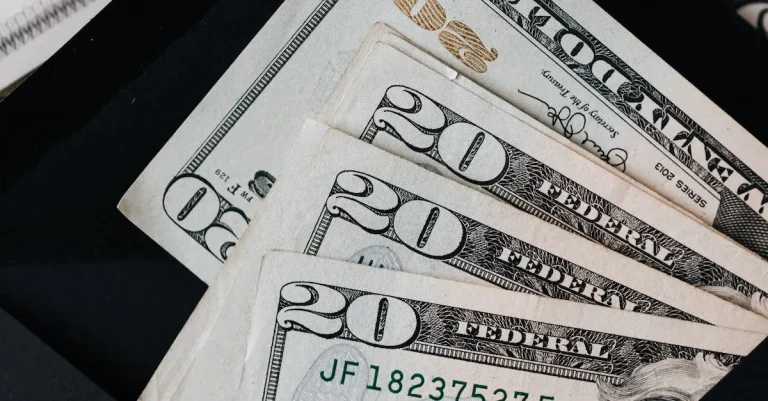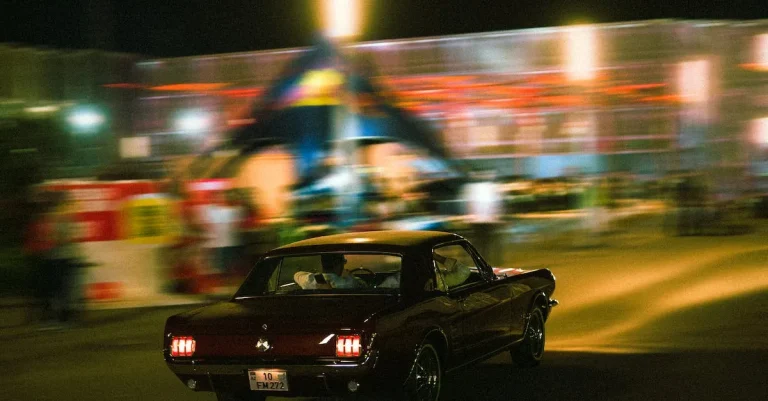Is The Mafia Still Active In New York?
The Italian-American mafia, also known as La Cosa Nostra, has long been a part of the fabric of New York City. Images of mobsters like Al Capone immediately come to mind when thinking about the history of organized crime in the Big Apple. If you’re short on time, here’s a quick answer to your question: While the mafia in New York today is a shadow of its former self, there is still mafia activity in the city if you know where to look.
In this article, we’ll take an in-depth look at the current state of the mafia in New York City. We’ll explore how the mafia has changed and adapted over the decades. We’ll also highlight some of the remaining mafia presence and activity in the city.
The Height and Decline of the Mafia in New York
The Mafia, also known as La Cosa Nostra, has long been a prominent criminal organization in New York City. Its origins can be traced back to the early 20th century, when Italian immigrants formed tight-knit communities and established organized crime networks.
At its peak, the Mafia in New York was made up of five powerful families: Gambino, Genovese, Lucchese, Bonanno, and Colombo.
The Rise of the Five Families
During the mid-20th century, the Five Families gained immense power and influence in New York City. They controlled various criminal activities, including gambling, extortion, loan-sharking, and drug trafficking.
The Mafia operated in a hierarchical structure, with bosses at the top and soldiers and associates carrying out their orders.
The Mafia’s control extended to labor unions, construction projects, and even the entertainment industry. They infiltrated legitimate businesses and used their influence to generate immense wealth and power. This gave them significant control over the city’s political and economic landscape.
However, their reign of power was not without opposition. Law enforcement agencies and federal prosecutors relentlessly pursued the Mafia, leading to numerous high-profile trials and convictions. The Mafia became a subject of public fascination, with movies like “The Godfather” showcasing their criminal activities and inner workings.
This further intensified the efforts to dismantle the organization.
Crackdowns Leading to Decline
Throughout the 1980s and 1990s, the Mafia faced a series of major crackdowns by law enforcement. The RICO (Racketeer Influenced and Corrupt Organizations) Act, passed in 1970, provided prosecutors with a powerful tool to target organized crime.
This law allowed for the prosecution of individuals involved in a pattern of criminal activity, even if they were not directly involved in specific crimes.
The relentless pursuit of the Mafia by law enforcement, combined with internal power struggles and the emergence of other criminal organizations, led to a decline in the Mafia’s control and influence in New York City.
The arrest and conviction of high-ranking mobsters weakened their leadership and disrupted their criminal operations.
Today, while the Mafia still exists in New York, its power and influence have significantly diminished. The rise of other criminal organizations, such as drug cartels and street gangs, has shifted the focus of law enforcement resources.
The Mafia continues to face internal conflicts and challenges, making it less formidable than it once was.
It’s important to note that the information provided in this article is based on historical accounts and general knowledge about the Mafia in New York City. For more in-depth and up-to-date information, it is recommended to consult authoritative sources such as the Federal Bureau of Investigation (FBI) or the United States Department of Justice.
Remaining Mafia Presence in New York
Current Mafia Families
The Mafia, also known as La Cosa Nostra, has long been associated with organized crime in New York. While its influence and power have diminished over the years, there are still remnants of the Mafia presence in the city.
Today, there are believed to be five major Mafia families operating in New York: the Gambino, Genovese, Lucchese, Bonanno, and Colombo families.
These families are structured hierarchically, with a boss at the top, followed by underbosses, capos, and soldiers. Each family has its own territory and operates independently, but they occasionally collaborate on certain criminal activities.
The Genovese family is considered the most powerful and influential Mafia family in New York, with a history dating back to the early 20th century. The Gambino family, once led by infamous mob boss John Gotti, is also a significant force in the city.
Their Activities and Rackets Today
While the activities of the Mafia have evolved over time, they still engage in a wide range of illicit enterprises. Some of the most common rackets associated with the Mafia in New York include extortion, loan sharking, illegal gambling, labor racketeering, and drug trafficking.
The Mafia has a long history of infiltrating legitimate businesses to generate illicit profits. They often control and exploit industries such as construction, waste management, and the waterfront. By using their influence and engaging in corruption, they can secure lucrative contracts and skim off the top.
It’s important to note that law enforcement agencies have been successful in dismantling many of the Mafia’s traditional rackets over the years. However, the Mafia is known for its ability to adapt and find new opportunities for illegal activities.
While the Mafia’s influence may not be as prominent as it once was, it would be naive to assume that it has been completely eradicated. The secretive nature of the organization makes it difficult to gauge the extent of its current operations.
However, law enforcement agencies remain vigilant in their efforts to combat organized crime in New York.
For more information on the history and current activities of the Mafia in New York, you can visit the FBI’s official website.
Cooperation with Other Organized Crime Groups
The Mafia, also known as La Cosa Nostra, has a long history of cooperation with other organized crime groups. Throughout the years, they have formed alliances and partnerships with various criminal organizations, both domestically and internationally.
These collaborations have allowed them to expand their criminal activities and increase their power and influence.
Domestic Cooperation
Within the United States, the Mafia has established connections with other criminal groups such as street gangs, drug cartels, and biker gangs. These alliances enable them to pool resources, share information, and collaborate on criminal enterprises.
For example, the Mafia may provide protection and financial backing to street gangs involved in drug trafficking, while benefiting from the gangs’ street-level distribution networks.
Furthermore, the Mafia has been known to work with other organized crime groups in specific industries. For instance, they have been involved in labor union corruption, infiltrating and controlling unions to gain influence and profit from labor-related activities.
This cooperation allows them to exploit workers and manipulate industries for their own gain.
International Connections
The Mafia’s reach extends beyond U.S. borders, with connections to organized crime groups around the world. These international collaborations offer opportunities for cross-border criminal activities, such as drug trafficking, money laundering, and human trafficking.
One example of international cooperation is the relationship between the Italian Mafia and Russian organized crime groups. This partnership has facilitated the smuggling of drugs from Asia into Europe, with the Italian Mafia providing logistical support and the Russian groups handling distribution networks in Eastern Europe.
It is important to note that while cooperation with other organized crime groups remains a significant aspect of the Mafia’s operations, the extent and nature of these alliances may vary over time. Factors such as law enforcement crackdowns, leadership changes, and shifts in criminal dynamics can influence the level of cooperation between different groups.
For more information on organized crime and the Mafia’s involvement, you can visit websites such as www.fbi.gov/investigate/organized-crime and www.justice.gov/criminal-ocgs.
Future Outlook
The future outlook for the Mafia in New York is a complex and ever-evolving one. While its influence and power have undoubtedly waned over the years, it would be premature to declare its complete demise. The Mafia has proven time and again its ability to adapt and survive in the face of challenges.
Law Enforcement Efforts
Law enforcement agencies continue to crack down on organized crime in New York. The FBI, in particular, has dedicated resources to dismantling Mafia operations and prosecuting its members. With advancements in technology and intelligence gathering techniques, law enforcement has become more effective in targeting and apprehending key figures within the Mafia.
👍 Did you know? The FBI’s Organized Crime Division has made significant strides in dismantling Mafia families in recent years. For example, the famous “Operation Family Secrets” in 2007 resulted in the conviction of several high-ranking members of the Chicago Outfit.
Changing Dynamics
The Mafia has also had to adapt to a changing landscape. Traditional activities such as loan sharking and illegal gambling have faced stiff competition from legal alternatives. The rise of online gambling platforms and the legalization of sports betting in some states have posed challenges to the Mafia’s control over these activities.
Furthermore, the infiltration of other criminal organizations, such as drug cartels, into New York has affected the Mafia’s dominance. These new players bring a level of violence and ruthlessness that the Mafia may struggle to match.
As a result, the Mafia has had to find new avenues for revenue and influence.
Global Reach
While the Mafia’s influence in New York may have diminished, it is crucial to consider its global reach. The Mafia has established connections and operations in various countries, allowing it to continue its illicit activities beyond U.S. borders.
This international network enables the Mafia to remain a powerful and dangerous force, even if its presence in New York has declined.
👏 Fun Fact: The Italian Mafia, also known as Cosa Nostra, has been known to collaborate with other criminal organizations worldwide, forming powerful alliances that extend their reach and influence.
Conclusion
While today’s mafia doesn’t have the power and influence it once held over New York, there are still signs of mafia activity if you pay attention. Law enforcement continues to monitor and prosecute organized crime. However, the mafia has proven itself adaptable, and will likely continue on in some form going forward.
The romanticized notion of the historic mafia may live on in movies and TV, but the realities of today’s mafia reflect an organization that, while weakened, still seeks to profit from rackets and illegal activities in the shadows of New York City.








